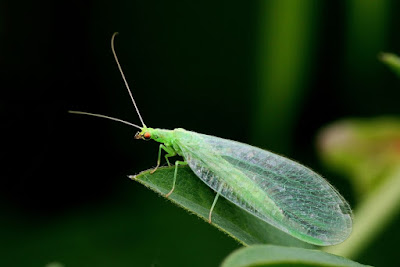Friendly Garden Pests
If you have a garden, you most likely run into the problem of bugs making themselves at home in it. Before you call Lake of the Ozarks’ best pest control company to get rid of them, check to see if they may actually be beneficial to your garden. There are many “pests” that can help defend your garden against other pests that could do a lot of harm to your plants. Here are several bugs that could be beneficial to your garden:
The ground beetle is a nocturnal insect that feeds on slugs, snails, cutworms, cabbage maggots and other pests that live in the soil. They typically live beneath mulch, around compost piles or around perennial plants. They will often create vertical tunnels that they use to trap prey. However, they typically wander around and feed at night. Ground beetles live long lives, compared to other insects, as they can inhabit a garden for more than a year.
Ladybugs
Ladybugs or lady beetles are one of the more beneficial insects to keep in your garden. In fact, they are so beneficial that many people buy them specifically to protect their gardens. Both the adults and the larvae will feed on pests that are not too hard-shelled, too fast or too large. Ladybugs will continue to feed in your garden as long as weather permits. The female ladybugs will lay their eggs and when those eggs hatch into larvae, they will begin feeding on many soft-bodied pests, mites and insect eggs. Within a month, they will pupate and emerge a week later as young adults. After the cycle is finished, they will begin the process again. Although ladybugs will help cut down on unwanted pests, they may fly away after release or if there are not enough pests to keep up their population.
Soldier Beetles
This large beetle, often called a leatherwing beetle, can be very helpful with grasshopper control. Closely related to lightning bugs (or fireflies), these slow-flying beetles are often seen among flowers or in thick vegetation. The soldier beetles lay their eggs in the soil. Once they hatch into larvae, they can feed for up to a year on the eggs and larvae of beetles, grasshoppers moths and other insects. The adults will often feed on aphids and other soft-bodied insects, but mainly on flower nectar and pollen. They are often attracted to herbs in bloom, single flowered marigolds and members of the daisy family.
This insect predator bears very distinctive, delicate looking wings, long antennae and gold or copper eyes. There are many different species of green lacewings, but they all closely resemble one another. They are not picky eaters and will feed on a wide range of pests including aphids, caterpillars, mites, whiteflies, thrips, mealybugs, leafhoppers and more. They frequently feed on insect eggs, plant nectars, pollen and honeydew. Their larvae can eat over 200 insects each! Green lacewings will often appear on their own after the spring breeding season, in which they will scatter far and wide to lay their eggs. However, you can encourage them to stick around by planting sweet alyssum, angelica, cosmos and coreopsis. Although it is a common practice to use the green lacewing for insect control, having them in your garden will not guarantee that your plants will never experience pest feeding.
Protect Your Home and Garden with Best Pest Control
Although there are a few bugs that will protect your garden from pests, the best way to get rid of the unwanted pests is with the best pest control company at the Lake of the Ozarks. If you spot pests in your home or garden, give us a call! Our expert team is trained to get rid of annoying pests. We have a defense against all the pests that affect Central Missouri! Schedule an appointment by contacting Best Pest Control at 573-348-1600.
THE LAKE'S MOST TRUSTED PEST CONTROL COMPANY
Like us on Facebook
Follow us on Twitter
Follow us on LinkedIn
Follow us on Google+
573-348-1600 in Osage Beach
573-873-1118 in Sunrise Beach






Comments
Post a Comment